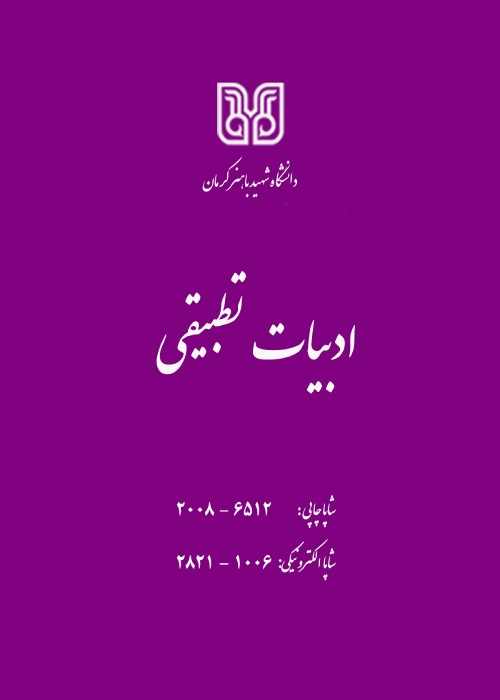A Comparative look to the Recall method of Personality of Halaj in the poem Shafi'ee kadkani and Salah Abdul Sabour
The tendency to call them myths and invoke them in modern art has many reasons: the return to spirituality, the liberation of material time and the attempt to overthrow it, the creation of pluralism by modernity, the ambiguity and multiplicity of work are among the reasons for this tendency. Contemporary artist expresses his thoughts and emotions in the veil of myths in order to relieve the suffering he suffers, “because myths are inherently better off than the sacred and the eternal, because of their two distinctive and intrinsic elements of aesthetics and emphasis on the sacred. Fill these gaps for contemporary man. (Qasimzadeh, Ghobadi, 1391: 40) And since "mythical mind is the mind of the creator" (Biden, 1386: 167) Mythical poets, with creative expression, create a new world and dynamism for literature, they provide with Symbolic, ambiguous, fluid and polyphonic expressions that are specific to the myth attempt to establish the "ideal order of the myth" (Kupp, 1384: 41) in the turbulent world of their age. Contemporary poets have come to the realization that the decline of sacred affairs is one of the most destructive of modern times, and have invoked national and human myths, calling for the disguise of dissident figures such as, inadvertently, and in fact, embodied in reality. It is the age of modernity. "The concepts that the poet seeks to instill and understand through the use of myth are human cultural and intellectual meanings or political concepts that the poet does not want or cannot express directly and explicitly.
In this article, we have tried to first define and analyze the method of invoking the masquerade style in contemporary poetry, and then, in a comparative way, to investigate the application of the masquerade style in the poetry of two contemporary Iranian and Egyptian poets, namely Shafi'i Kadkani and Salah Abdul Nassib The key point is to find out what the artistic and cultural implications of the call for traditional masks in contemporary poetry are and how there is a difference in the style of reading these masks between contemporary Persian and Arabic literature.
The link between Arabic and Persian culture and language is so strong and long-lasting that it is impossible to separate the two. "The necessity of examining the links between these two languages in literary, historical discourses on the one hand, and crossing cultural boundaries on the other, has doubled the need to address the common issues between the two languages. (Dadkhah, 125: 1386) Invoking the mythical, historical, literary, Sufi, folk, masquerading characters is one of the common boundaries of contemporary Arabic and Persian poetry. Invoking traditional personalities in the guise of sophisticated techniques in Arabic and Persian literature is therefore one of the necessities of comparative research. The issue raised in the present study is a comparative study of the appeal of the personality of Halaj in the poetry of two contemporary Arab and Iranian poets, Salah Abdul Sabour and Shafi'i Kadkani. After discussing the general issues of research, the main purpose of the study, namely, to explain and apply the method of summoning personality in modern poetry of these two contemporary poets. Recognizing the multidimensional characteristics of the solution personality, as well as the social, political and cultural needs of their community, these two poets have invoked this personality in a masquerading way to satisfy their own mental needs and, on the other, to Respond to the cultural needs of their community.
In contrast to the invocation of masquerade in Persian poetry and Arabic poetic dramas, what makes the difference is the first; that poetic plays have a more personalized character than contemporary Persian poetry and can incorporate several masks into Persian poetry. Because of the short structure of the poems, the opportunity for personalization is less important. Second, in disguising theatrical plays, language is a tool for another end and is changing with the characters of the play, but in contemporary Persian poetry, language literature is more valid. Thirdly, it is intended in the playful spirits of the playwright's spirits and avoids poetic artifacts, but in the non-visual poetry in which the mask is used, ambiguity and cryptography is a literary value. The ambiguity, "is the essence of pure and enduring literature, and for the literary context, value and virtue." (Fotouhi, 2008: 30: 30)
- حق عضویت دریافتی صرف حمایت از نشریات عضو و نگهداری، تکمیل و توسعه مگیران میشود.
- پرداخت حق اشتراک و دانلود مقالات اجازه بازنشر آن در سایر رسانههای چاپی و دیجیتال را به کاربر نمیدهد.


